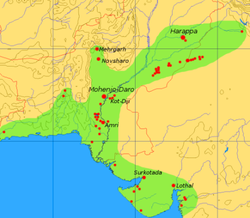This article needs additional citations for verification .(October 2016) |
Religion has been a factor of the human experience throughout history, from pre-historic to modern times. The bulk of the human religious experience pre-dates recorded history, which is roughly 7,000 years old. [1] A lack of written records results in most of the knowledge of pre-historic religion being derived from archaeological records and other indirect sources, and from suppositions. Much pre-historic religion is subject to continued debate.
Contents
- Religious practices in prehistory
- Middle Paleolithic (200,000 BC – 50,000 BC)
- 50th to 11th millennium BC
- 10th to 6th millennium BC
- Before Common Era (BCE)
- Common Era (CE)
- 1st to 5th centuries
- Middle Ages (5th–15th centuries)
- 5th to 10th centuries
- 11th to 15th centuries
- Early modern and Modern eras
- 16th century
- 17th century
- 18th century
- 19th century
- 20th century
- 21st century
- See also
- Notes
- Bibliography
- External links
